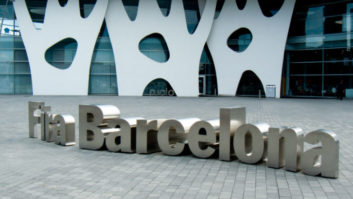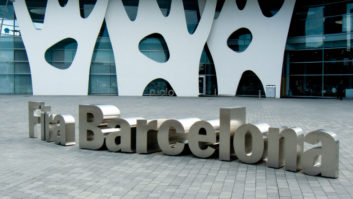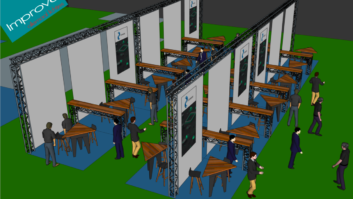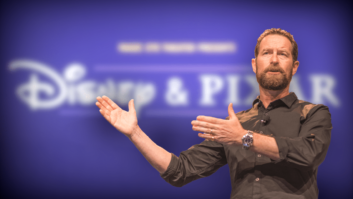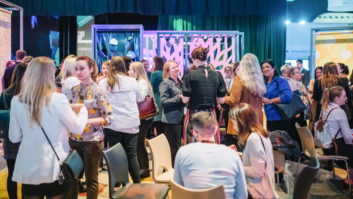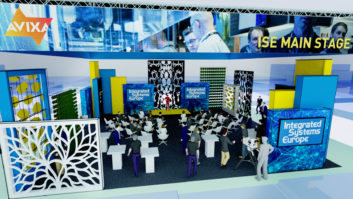The recent CEDIA Forum, held last month at Walton Hall in Warwickshire, provided a unique opportunity for integrators, manufacturers, distributors and other stakeholders in the custom install market to discuss pertinent industry issues, says Paddy Baker. The brainchild of CEDIA’s Peter Aylett, who facilitated the event, the Forum could be described as ‘panel sessions without a panel’. Each session began with an introduction to the subject from its chairman, after which it was opened up to the floor for discussion.
The CEDIA Forum began with Will the Tablet Kill the Touchscreen?, a discussion led by Dan Sait, editor of Essential Install. While many integrators present indicated that they were using iPads in projects currently, this was overwhelmingly because the client had one anyway, rather than it being bought as part of the project.
Perhaps for this reason, there wasn’t a clear consensus as to what the role of the iPad – or other non-Apple tablet – should be in a residential install. For some, the lack of hard buttons on the iPad was a significant negative point – and for others, the very portability and multifunctionality of the device meant that it could only be used as an alternative to an existing interface, as there was no guarantee – short of mounting it in the wall – that it would be available to use at any given moment.
The point was made strongly that the iPad is an interface, not a control system – partly because of its lack of multitasking and the lack of customisability of apps. Besides, whole-house control based on wireless technology was felt to be a no-no for a number of reasons.
So while the answer to the question in the session title was a resounding ‘no’, it was clear that integrators could still add value to projects by using iPads and the like. As one person said – it’s cool technology, and we should embrace it.
Next: Is broadcast TV dead?
@page_break@
Next on the agenda was a session that was perhaps less interactive than the rest, but no less interesting for that. Ved Sen of the consultancy Thinkplank asked the question Is Broadcast TV dead? The session provided a great deal of food for thought – for instance, what exactly do we mean by ‘dead’? Shakespeare may be dead, but his plays continue to be performed all around the world.
Perhaps a more pertinent question was: do TV channels have a future? Platforms – such as satellite and cable – are clearly necessary, as are programme-makers – but the relationship between viewer and TV channel is becoming increasingly tenuous. After all, technology is providing the ability not just to timeshift viewing but also to ‘placeshift’ – watching content on a mobile device, for instance. While this capability is delivered currently via channel-branded platforms (such as the BBC iPlayer or ITV Player), it might not remain so.
The number of platforms on which TV programmes can be watched continues to increase – for instance, games consoles are now getting in on the action. The increase in placeshifting is putting new demands on DRM – digital rights management – to control the use of media and strike a balance between user-friendliness on the one hand and ensuring content creators get paid on the other. A front-runner is UltraViolet, which is a cloud-based DRM service. However, it’s not clear at this stage whether DRM will restrict or enable the dissemination of content to mulitiple devices.
Other significant changes on the horizon include the development of custom programming, based on detailed customer profiling – and the growth of niche content providers, feeding into a ‘long tail’ marketplace.
So, while broadcast TV can’t be said to be dead – there is certainly still value in watching some material live – it is certainly undergoing a period of upheaval, which is set to continue for some time.
Next: 3DTV – opportunity or hype?
@page_break@
The third session, led by Callum Fauser, editor of SVI, was entitled 3DTV – Opportunity or Hype? It was felt that there was a lot more ‘push’ than ‘pull’ for 3D. While just about everyone from film studios to consumer electronics manufacturers is backing it as the next development in TV viewing, the scale of the demand from the CI end user does not – as yet – match up. I say ‘just about everyone’, as it was pointed out that while TV channels and broadcasters love it because it represents premium content, for the people that make 3D content it represents a challenge because of the increased costs of production relative to 2D.
There are some differences between the move to HD and the move to 3D, it was pointed out. HD can be applied universally – everything looks better at higher resolution. 3D, however, is only suited to specific content – films and sport being obvious examples. It is also a social experience – but not everyone has a pair of 3D glasses, and how many pairs will individuals be prepared to invest in for an ‘everyone back to mine’ session?
There are also some technical issues to sort out. On the content creation side, while most people tend to think of 3D as an ‘out at you’ experience, this can be tiring for the viewer over an extended period of time. Avatar, for instance, is notable for its use of depth into the screen. While it was the feeling of the group that projection provided the best 3D experience in the home, most 3D projection solutions involve only half the projected light reaching each eye, so a lot of light output is needed to compensate for this.
All in all, it was felt that there is a need to manage people’s expectations of 3D. It was also noted that gaming was likely to provide a bigger boost to 3D in the home than either films or television.
Next: How to succeed in an increasingly commoditised marketplace
@page_break@
In case you were thinking that IE Residential wasn’t getting a look-in, I had the pleasure of chairing the fourth session, How to Succeed in an Increasingly Commoditised Marketplace. I began by presenting some definitions of commoditisaiont: it generally describes a market with increased competition, decreasing prices and a perception that there is little or no value difference between different products. It can be a desired or an unintentional outcome, and while buyers can benefit, branded producers generally suffer.
Different companies had different ways of addressing the issue. Some expressed a preference for handling products with limited distribution, for which it was harder, or even impossible, to find a recommended retail price online. Others felt that a more transparent approach indicated a degree of trust between integrator and client. One integrator was happy to allow his clients to source their own TVs at retail, but charged a 15% on top of the price to cover dealing with warranty issues post-installation.
For others, it was felt that the way to success was to separate the supply of product from the supply of professional services – and they called on CEDIA to do more to promote the solutions provider message.
Finally, some higher-value products and services were discussed: services relating to home IT networks, such as infrastructure and IT support and internet security; energy metering; microelectrical generation and solar energy; and assisted living/home health technology. While a show of hands indicated that few integrators are providing many of these services right now, they certainly show potential for the future.
